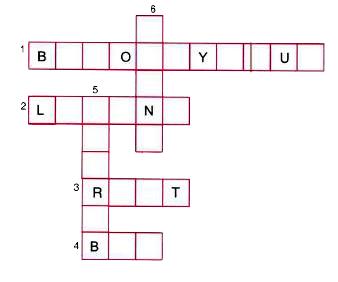Herbaceous plant that dies back to ground each year but sprouts again from underground parts is
Perennial
Biennial
Annual
Winter annual
The correct Answer is:A
To solve the question of identifying the herbaceous plant that dies back to the ground each year but sprouts again from underground parts, we can analyze the options provided: perennial, biennial, annual, and winter annual.
1. Understand the Definitions:
- Perennial Plants: These are plants that live for more than two years. They die back to the ground in unfavorable conditions (like winter) but have underground parts (like roots or tubers) that survive and allow the plant to sprout again in favorable conditions.
- Biennial Plants: These plants complete their life cycle in two years. They typically grow leaves in the first year and flower in the second year, but they do not die back to the ground each year.
- Annual Plants: These plants complete their life cycle in one year. Both the above-ground and underground parts die after one growing season.
- Winter Annuals: These are a type of annual plant that germinates in the fall or winter, survives through the winter, and then flowers in the spring.
2. Analyze the Question:
- The question specifies a herbaceous plant that dies back to the ground each year but can sprout again from underground parts. This indicates that the plant must have a mechanism to survive unfavorable conditions through its underground parts.
3. Evaluate Each Option:
- Perennial: Fits the description as it can die back and regrow from underground parts.
- Biennial: Does not fit since it does not regrow each year; it has a two-year life cycle.
- Annual: Does not fit because it dies completely after one year, with no regrowth.
- Winter Annual: Also does not fit as it does not die back to the ground each year; it germinates in winter and grows through to spring.
4. Select the Correct Answer:
- Based on the definitions and analysis, the correct answer is Perennial.
Final Answer:
The herbaceous plant that dies back to the ground each year but sprouts again from underground parts is a Perennial plant.
- Perennial Plants: These are plants that live for more than two years. They die back to the ground in unfavorable conditions (like winter) but have underground parts (like roots or tubers) that survive and allow the plant to sprout again in favorable conditions.
- Biennial Plants: These plants complete their life cycle in two years. They typically grow leaves in the first year and flower in the second year, but they do not die back to the ground each year.
- Annual Plants: These plants complete their life cycle in one year. Both the above-ground and underground parts die after one growing season.
- Winter Annuals: These are a type of annual plant that germinates in the fall or winter, survives through the winter, and then flowers in the spring.
- The question specifies a herbaceous plant that dies back to the ground each year but can sprout again from underground parts. This indicates that the plant must have a mechanism to survive unfavorable conditions through its underground parts.
- Perennial: Fits the description as it can die back and regrow from underground parts.
- Biennial: Does not fit since it does not regrow each year; it has a two-year life cycle.
- Annual: Does not fit because it dies completely after one year, with no regrowth.
- Winter Annual: Also does not fit as it does not die back to the ground each year; it germinates in winter and grows through to spring.
- Based on the definitions and analysis, the correct answer is Perennial.
The herbaceous plant that dies back to the ground each year but sprouts again from underground parts is a Perennial plant.
Topper's Solved these Questions
- DIVERSITY IN ANGIOSPERM MORPHOLOGYBOOK - DINESH PUBLICATION ENGLISHCHAPTER - DIVERSITY IN ANGIOSPERM MORPHOLOGYEXERCISE - Revision Question from competitive exams
63 Videos
- DIVERSITY IN ANGIOSPERM MORPHOLOGYBOOK - DINESH PUBLICATION ENGLISHCHAPTER - DIVERSITY IN ANGIOSPERM MORPHOLOGYEXERCISE - Check your Grasp
10 Videos
- DIGESTION AND ABSORPTIONBOOK - DINESH PUBLICATION ENGLISHCHAPTER - DIGESTION AND ABSORPTIONEXERCISE - CYG
10 Videos
- ECHINODERMATABOOK - DINESH PUBLICATION ENGLISHCHAPTER - ECHINODERMATAEXERCISE - REVISION QUESTIONS
65 Videos
Similar Questions
Some plants protect their parts by growing under the ground. This is called
View SolutionHow do the back cross and test cross from each other?
View SolutionA symbiotic association between fungus and underground part of plant is
View SolutionIn which plant the lateral branches originate from the basal and underground portion of the main stem, grow horizontally beneath the soil & then come out obliquely upward giving rise to leafy shoots ?
View SolutionSuppose a plant has tuberous roots and rhizomes both as underground structures. How can you distinguish a root from rhizome ?
View SolutionA shell of mass 4kg moving with a velocoity 10m/s vertically upward explodes into three parts at a height 50m from ground. After three seconds, one part of mass 2kg reaches ground and another part of mass 1kg is at height 40m from ground. The height of the third part from the ground is : [g=10m/s2]
View SolutionA shell of mass 4kg moving with a velocoity 10m/s vertically upward explodes into three parts at a height 50m from ground. After three seconds, one part of mass 2kg reaches ground and another part of mass 1kg is at height 40m from ground. The height of the third part from the ground is : [g=10m/s2]
View SolutionComplete the crossword using the clues given below.
Clues across :
1. Plant that bears buds in leaves for propagation.
2. The flattened green part of leaf.
3. Underground plant part.
4. Structure that develops into flower.
Clues down :
5. The central big vein of a leaf.
6. A modification seen in cactus.

View Solution1. Venation found in monocot plants.
2. A plant in which leaf is modified to catch insects.
3. Underground part of the plant body which fixes it to the soil.
4. Plant that possesses parallel venation.
5. Fusion of male gamete with the female gamete
6. Part of the plant body which is divided in nodes and internodes.
7. Male part of a flower.

View SolutionAn electron in the hydrogen atom absorbs energy and jumps to the 4th orbit. It jumps back to the ground state in steps e.g., from 4th to 3rd orbit, then from 3rd to 2nd orbit and finally to the ground state etc.
Total number of lines obtained in the spectrum would be
View Solution
